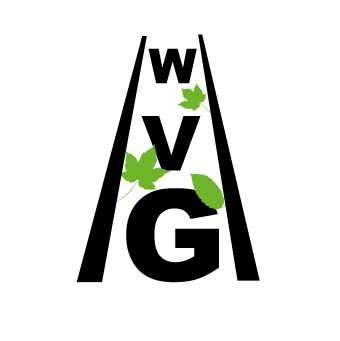History of the Wye Valley Railway
Overview
There were several reasons for promoting a railway between Monmouth and Chepstow. Prior to opening the railway, freight from the industrialised Wye Valley and passenger traffic had to make a journey of 43 miles instead of 15 miles by the new route shortening the journey time by two hours.
Henry Charles Fitzroy Somerset 8th Duke of Beaufort ('Statesmen. No. 233. "the Duke of Sport.") by Sir Leslie Ward chromolithograph, published in Vanity Fair 30 September
1876.
(Creative Commons License-National Portrait Gallery)
Chepstow port could be able to compete with Swansea, Cardiff and Newport. When the Severn Tunnel was opened there was the prospect of a through route from Bristol to the North of England. Tourists would be expected to be attracted to the beauty of the Wye Valley.
10 August 1866. The Wye Valley Railway Act authorised the railway to be built. The planned route largely followed the west bank of the river Wye passing through Tintern.
There was a banking crash at this time, investors lost confidence and the money to build the railway could not be raised.
7 February 1870. Letter to the Times, complaining about the turnpike between Chepstow and Monmouth, commenting:
‘There are people sanguine enough to entertain visionary plans of a railway along the valley but they may just as well amuse themselves with schemes of a balloon navigation to the moon.’
28 September 1874. Extravagant claims in a Prospectus to attract investors published in The Globe:
‘The railway will command a very large traffic from tourists... and also in goods.’
14 June 1875. The Wye Valley Railway Amendment Act 1875 giving authority for a revised plan to be built following the east bank of the Wye to Tintern Parva. The 8th Duke of Beaufort owned most of the land on which the railway was built. Several hundred navvies would have been employed on building the railway.
Sydney Yockney – Resident Engineer
(Yockney family records courtesy of Iain Yockney)
The engineers for the line were S H Yockney and Son. Samuel Hansard was the senior partner. He impressed Brunel when he worked under him building Box Tunnel on the London to Bristol line. His son Sydney William Yockney was the Resident Engineer.
Tidenham tunnel looking towards the southern portal
(Graeme Bickerdike - Forgotten Relics)
The 1120 yard Tidenham Tunnel, driven though hard limestone, was the most challenging work on the line. It took 20 months to complete. Work continued day and night. The work faces advanced by a total of 2 yards a day which the company considered was good progress.
21 October 1876. The Bristol Mercury and Western Counties Advertiser described the official opening of the line:
‘The engine was decked with evergreens, flowers and flags. It left Chepstow with many guests and stopped at Tintern for lunch at the Beaufort Arms Hotel followed by an inspection of the ruins of Tintern Abbey. The train journey then continued to Monmouth where dinner was taken at the Beaufort Arms Hotel, and there were about fifty ladies and gentlemen present.
The dinner was of the most réchérche (exotic, excessively refined) character. ‘
Speeches and toasts followed.
(Afterbrunel CC BY-SA 4.0)
1 November 1876. Line opened to the public.
1876 – 1903. Successive years of poor financial results led to a receiver being appointed in 1889.
1 July 1905. Amalgamation with the Great Western Railway
18 July 1932. Netherhope Halt built, the last of 6 halts to be constructed to attract more traffic.
14XX Class 0-4-2T Collett No. 1421 near
Netherhope. Photo taken circa 1957-58.
(Neil Parkhouse collection)
1934. Streamlined railcars, known as ‘Flying Bananas’, were introduced by the GWR on main lines and branch lines. They were Britain’s first ever diesel railcars and operated on the Wye Valley between 1941 to the 1950s.
Preserved Railcar W4W at The National Rail Museum York. W4W operated on the Wye Valley Railway.
(Science Museum Collection -Creative Commons attribution 4.0 license)
30 August 1958. Reported in the Western Mail:
‘Only one ticket sold during a day at Monmouth Railway Station recently – and that was a 6 1⁄2 d one.’
5 January 1959. Passenger services withdrawn. Tintern and Redbrook station stayed open for goods and parcels.
Last passenger train Monmouth-Chepstow
(Great Western Trust)
4 January 1964. Last goods traffic north of Tintern Quarry.
December 1981. Last train from Tintern Quarry.
Diesel-hydraulic (Hymek) hauling loaded wagons
from Tintern
Quarry
(Bill Potter/Kidderminster Railway Museum)
September 1992. Last train to use the line departs from Dayhouse Quarry, Tidenham.








